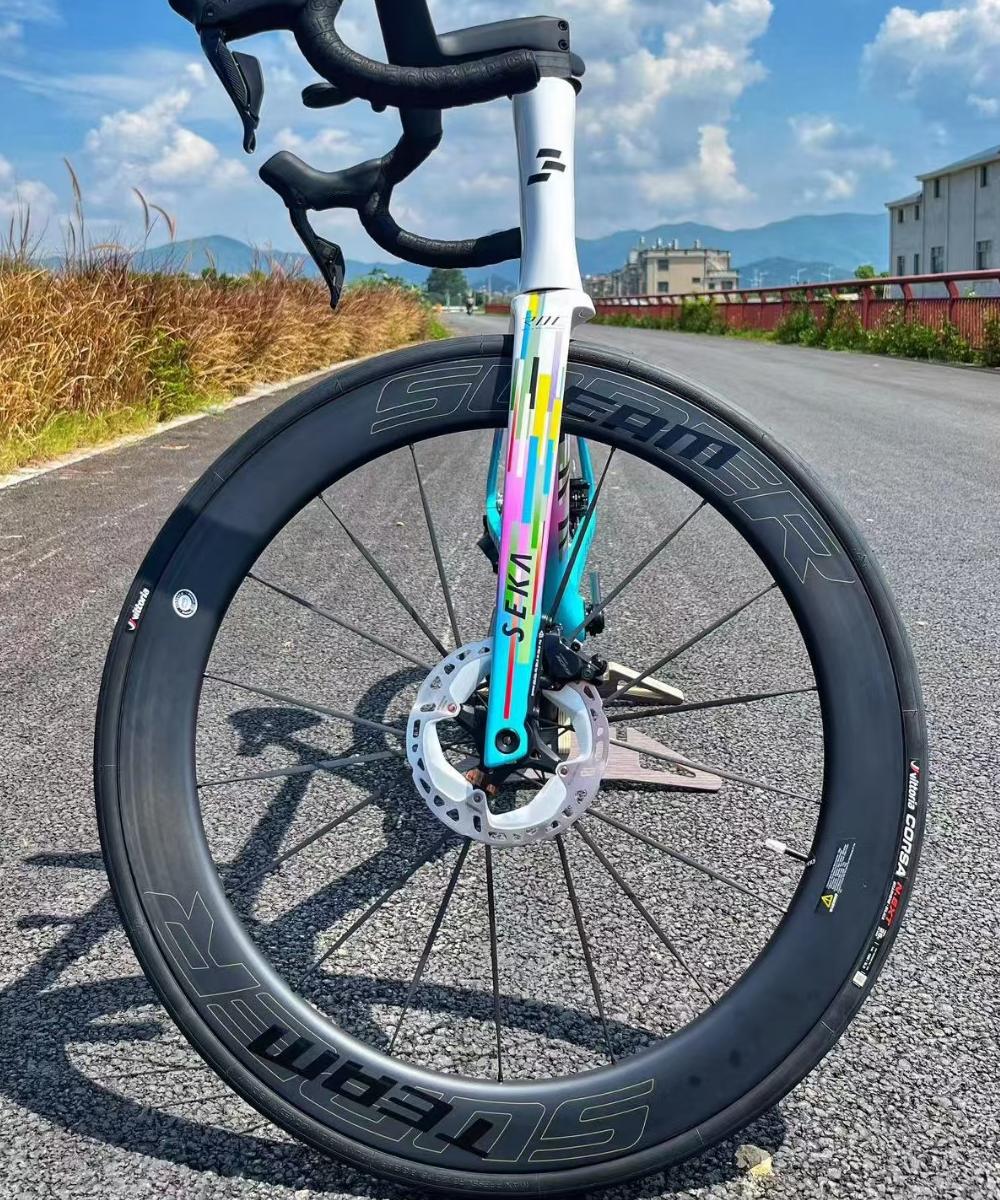How to Clean and Maintain Your Carbon Fiber Wheelset
Carbon fiber wheelsets are a major investment for any cyclist—offering lightweight performance, aerodynamic gains, and stiffness. But to ensure they last and continue to perform at their best, regular cleaning and proper maintenance are essential. Here’s how to care for your carbon wheels the right way.
1. Cleaning Your Carbon Wheels: Step-by-Step
Tools and Materials:
Soft sponge or microfiber cloth
Mild soap or bike-specific cleaner
Soft-bristle brush
Clean water (preferably low pressure)
Isopropyl alcohol (for rim brake tracks)
Dry towel
Cleaning Process:
Remove the wheels from your bike for better access and control.
Rinse gently with water to remove loose dirt and grit.
Apply soap or cleaner to a sponge or cloth and gently scrub the rims, spokes, and hubs.
Use a brush to reach tight spots like spoke holes or around the hub flanges.
For rim brake wheels, use isopropyl alcohol and a clean cloth to wipe down the braking surface—removing brake pad residue and contaminants.
Rinse thoroughly, avoiding high-pressure sprays that could force water into bearings.
Dry completely with a clean towel before reinstalling the wheels.
2. Regular Maintenance Tips
Check Rim Surfaces:
For rim brake models, inspect for excessive wear, discoloration, or surface cracks.
For disc brake wheels, check that the rotors are true and free from contamination.
Inspect for Cracks or Damage:
After any crash or impact, thoroughly examine the rim and spoke bed for hairline cracks or delamination.
Spin the wheel and look for wobbles or hops that might indicate structural issues.
Monitor Spoke Tension:
Uneven or loose spokes can lead to unbalanced wheels and potential failure.
If a spoke feels too loose or if the wheel is out of true, consult a qualified mechanic.
Keep the Hubs Smooth:
Periodically check hub bearings for smooth rotation and minimal play.
If you feel grinding or hear noise, it might be time for re-greasing or bearing replacement.
3. Storage and Transport Best Practices
Store indoors in a dry, temperature-controlled environment to avoid UV damage and moisture exposure.
Avoid hanging wheels by the spokes for extended periods—this can introduce stress.
Use wheel bags or padded protection during travel to prevent scratches and impact damage.
4. Brake Pad Considerations for Rim Brake Wheels
Always use manufacturer-recommended brake pads for carbon rims. Standard pads for alloy rims can damage carbon surfaces.
Replace pads when they become glazed or worn down—this helps preserve braking performance and rim life.
Final Thoughts
Well-maintained carbon wheels not only perform better but also last significantly longer. A regular cleaning and inspection routine takes only a few minutes but protects your investment and ensures your rides stay smooth, safe, and fast. Whether you're racing, training, or just cruising, clean wheels are happy wheels.




